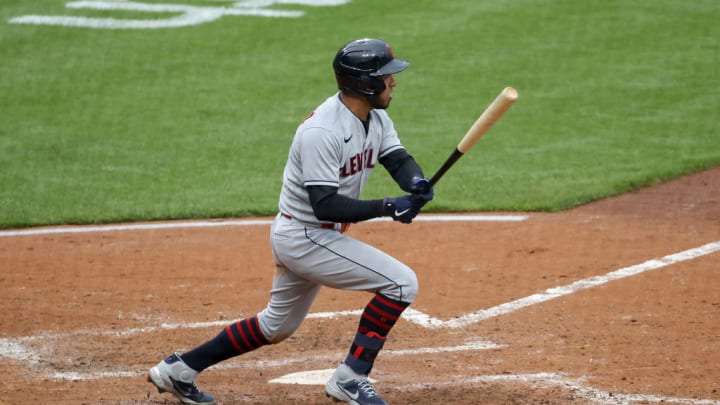Swinging and Missing Completely Stopping the Indians From Offensive Success

It goes without saying that the Cleveland Indians are struggling offensively. We’ve discussed it before, but currently the Tribe is averaging less than four runs per game, 12th in the American League.
They are second last in batting average (.209), but weirdly lead the league in home runs. They have the largest percentage of their runs scored coming from homers, which might seem like a positive statistics, but really is a negative one.
They don’t score much unless someone hits a home run.
They do rank 5th in the AL in walks, and have dropped in recent days to a tie for third in striking out the least amount of times.
We are a big believer in the strikeout/walk ratio in determining the ability of a hitter.
While there are exceptions, hitters that have high strikeout totals and don’t walk a lot aren’t destined to have long careers in the big leagues. It’s fine if you have high whiff and walk rates. In Cleveland, think about players like Jim Thome and Travis Hafner.
It’s one reason we were concerned about Amed Rosario, who last season had a 39/4 ratio.
What worries us is that if a batter doesn’t know the difference between a strike and a ball, pitchers figure that out pretty quickly, and realize they don’t have to throw the batter a pitch in the zone to get them out.
It’s also why we are anxious to see how young hitters like Tyler Freeman and Owen Miller do when minor league baseball starts in May. So far in their professional career, they make opposing pitchers throw strikes to get them out for the most part.
So far, the Cleveland hitters with the worst ratio in this regard are Austin Hedges (7 K’s/1 BB), Franmil Reyes (18/3), Andres Gimenez (10/2), and Josh Naylor (12/4).
Can you imagine how lethal Reyes would be at the plate if he could lay off pitches out of the strike zone?
We understand some of that comes with experience, because hitters are anxious to come up with the big hit, rather than keep the line going and pass on the opportunity to the next batter.
On the other hand, here are the hitters who have good ratios: Jose Ramirez (8/7), Cesar Hernandez (13/10), Jordan Luplow (10/7), and Roberto Perez (14/9). This is one of the reasons, despite a .167 batting average thus far, we think putting Hernandez in the leadoff spot would be a good move.
It’s also why we are encouraged about Luplow, and why we think he should start seeing more at bats vs. right-handed pitching.
He leads the team home runs and RBIs, despite having just 37 plate appearances, and is 3 for 6 with two dingers against righties.
The outfield has not provided a lot of offense since the beginning of the 2020 season, so why not give Luplow more chances based on this success.
So far, the Indians have been dismal hitting with runners in scoring position, which is the biggest reason they have become so dependent on the home run to score. The more opportunities these selective hitters get, we should see better results, as long as they maintain patience.
Think to Tuesday night, when Luplow fanned with the bases loaded in the fifth despite being ahead in the count, 3-1. He swung at two pitches above the zone. That inning is different if he just takes the walk, which he has done the season for the most part.
On the other hand, keep an eye on players like Reyes, Gimenez, Naylor, and to a lesser extent, Amed Rosario, and see how many times they get themselves out.
We aren’t saying it’s easy to hit big league pitching, but it helps if you limit yourself to swinging at good pitches.
The encouraging thing about Tuesday’s contest was the Indians drew nine walks. They need the base on balls to help their offense.
